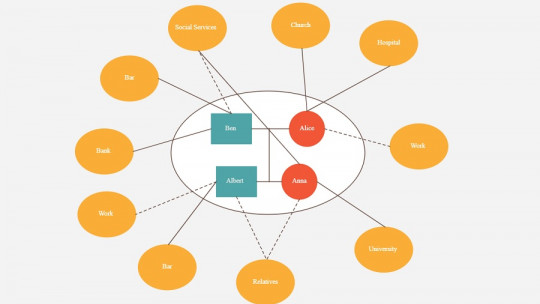
What is the differentiation process? To answer this question, I will first talk about Murray Bowen, a psychiatrist and also a pioneer in systemic family therapy. He is the author of the Systemic Family Theory and the creator of the Genogram or Family Map.
The Genogram is a dynamic tool that allows you to have a vision of how a family is structured at a given time, as well as its ways of relating, taking into account at least three generations. With this multigenerational perspective, it is considered that, to know the current family system, it is necessary to know the historical evolution of the families of origin of each member of the system; That is, knowing the individual history of the person, that of their parents and their relational patterns with their own parents.
Systemic Family Theory
Bowen conceived of the family as a system ; Therefore, if one member of the system changes, it will result in a change in another member of the system. In his theory, he talks about superficial changes – those transitory ones that can reduce the symptom momentarily – and profound changes – those that require an effort from each person, are long-term and have the consequence of generating new relationship patterns, allowing the individual a better definition of himself.
Systemic Family Theory proposes eight concepts. Let’s see what they are.
1. Triangles
Bowen believes that this It is the basis of the emotional system, since it is the smallest unit of relationship For Bowen, an emotional system of two people (dyad) is unstable, because in the face of a symptom it can be disturbed.
However, if a third person enters, this symptom can be counteracted. To understand it better, I will give an example from everyday life: in an argument between two friends (A and B). Instead of facing it and telling B what he feels and looking for a solution between them, A includes a third party (C) to whom he tells what has happened and how hurt he feels (creating an alliance between the two of them, A and C). ). What this achieves, rather than solving the problem, is aggravating it, since you do not face it directly with the person who has hurt you.
The level of intensity in triangulation varies between families and within the same family over time The lower the level of differentiation in a family, the more important triangulation will play in protecting emotional stability. On the contrary, if individuals maintained their emotional autonomy, triangulation would be minimal, and the stability of the family system would not depend on this (Kerr and Bowen, 1988).
2. Emotional system of the nuclear family
It refers to how the emotional process works between parents and children, which may have been learned and tend to be perpetuated in subsequent generations.
3. Projection process
It is a process by which parents transmit their emotional difficulties to their children. This process is the most common way, according to Bowen, by which we transmit emotional processes from generation to generation.
The level of differentiation and the anxiety that results from poorly differentiated functioning are the most important aspects in this process, since, as explained before, families use different ways of coping with anxiety, so if the anxiety is too much high or projection is the pattern that occurs in a family, its functioning can be sustained by overloading the children with anxiety, who can be seriously affected, developing chronic symptoms (Bowen, 1960; Kerr and Bowen, 1988 ).
4. Fraternal System: position of the brothers
This concept is related to how the position of children influences their development and personality characteristics.
5. Multigenerational transmission process
This concept is related to how the emotional process is transmitted through generations, which is why it is related to the concept of family projection.
6. Emotional cut
It refers to how members of the system deal with emotional conflicts that have not been resolved with other member(s) of the system: reducing emotional contact or “cutting it off” completely.
7. Societal regression
With this concept, Bowen refers to how one’s own emotional processes also influence the rest of society. This postulates that, if we take responsibility for our own self, we will be able to be attentive to our responsibility towards society.
8. Differentiation of the self
The last concept of his theory is the differentiation of the self. This concept refers to how each individual realizes their own emotional processes, being different from those of others It is about moving forward and becoming individual and autonomous beings on an emotional level, that is, it is a long-term process through which we separate ourselves from our parents until we achieve our own autonomy.
If you feel that you are dependent on any member or members of your family, it is possible that the differentiation process mentioned has not been completed correctly. In PsychoAlmería We are specialist psychologists, and we can help you in a personalized way to achieve your emotional independence.








